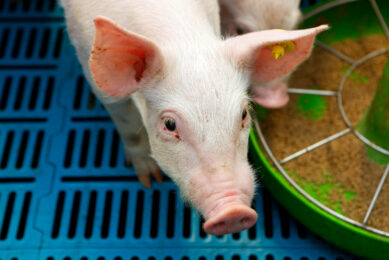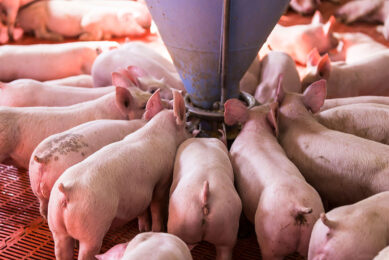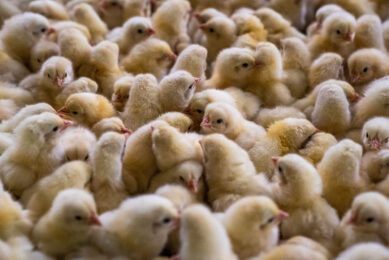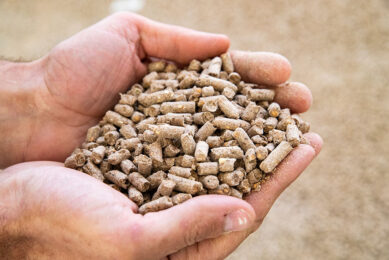Fatty acid glycerides: A key part of the solution
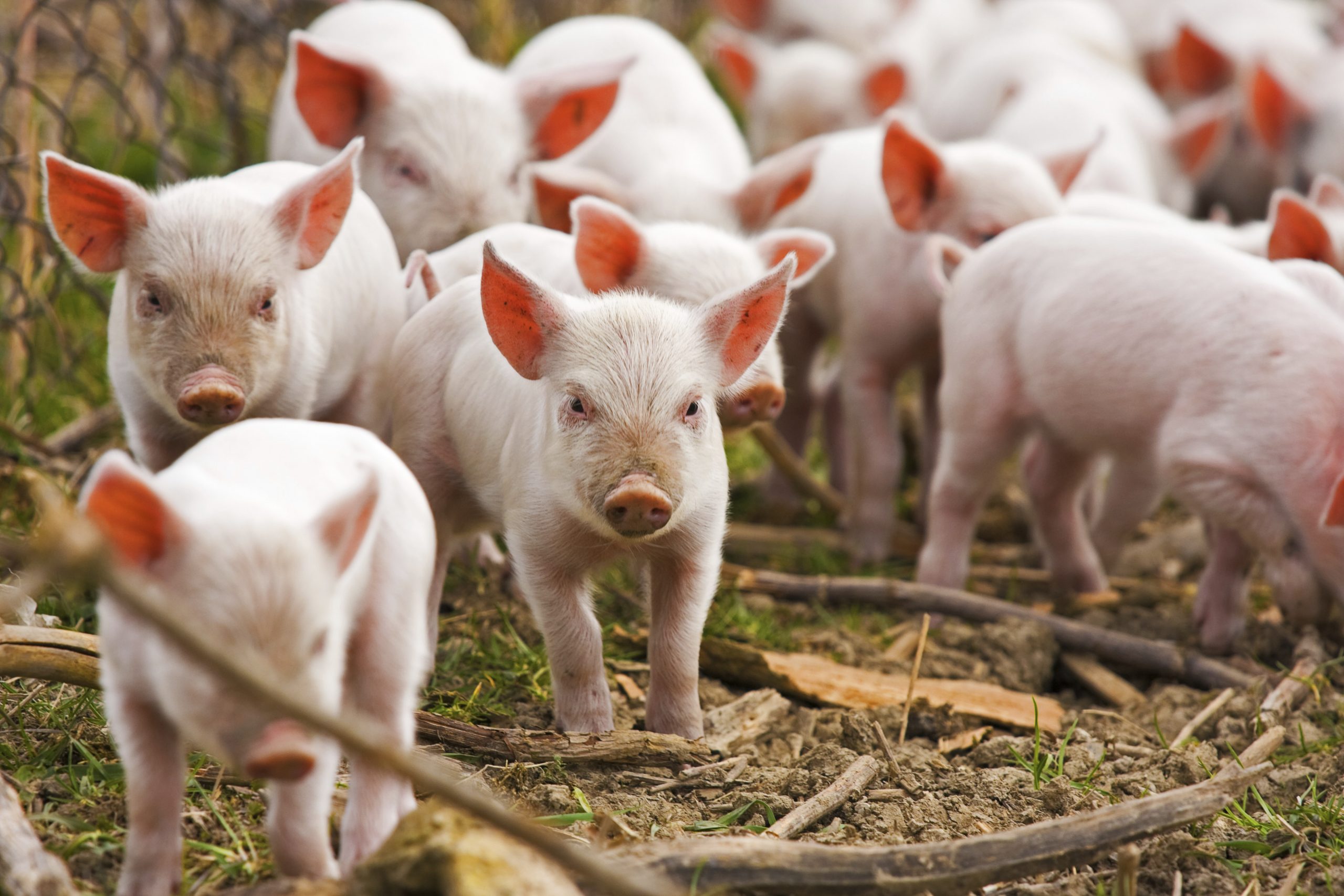
Modern meat production’s main challenge lies in improving production efficiency while optimising both animal health and nutrient utilisation. Feed costs represent a very large part of the costs of meat production. It’s crucial to focus on effective nutrient absorption and feed utilisation.
The intestine is the most important gate between expensive feed input and meat output. The huge surface area of intestinal mucosa is constantly in direct contact with the environment. It’s a selective barrier between the animal metabolism and the luminal environment providing an adequate protection against invasion of pathogenic bacteria, but also assures an optimal absorption of nutrients. Fulfilling both functions requires simultaneously maintaining a delicate balance between microbial components in the gut, adequate numbers of bacteria and their location. Any factor compromising the intestinal mucosa’s integrity, will affect animal health and performance in commercial operations. The financial business success is directly depending on gut health and intestine integrity.
Organic acids
Organic acids are widely present in nature. They occur in different plants and animals and are produced by intestinal bacterial fermentation of fibres, starches and sugar. They are called short chain fatty acids, containing less than 6 (SCFA), or mid chain fatty acids, containing from 6 to 14 carbon atoms (MCFA).
Some organic acids have a long history of use as preservatives. This antimicrobial action in feed or drinking water occurs through lowering of pH, reduction of the feed’s buffering capacity and a direct effect on the microbial population. Yet, more important is the activity of organic acids inside the animal’s digestive tract. An undissociated organic acid can easily penetrate the bacterial cell membrane. Inside the bacterial cell, with a pH above the pKa of the acid, it will lower the pH by dissociating and releasing protons. Cell enzymes are suppressed and energy depleted as bacteria try to maintain a neutral cytoplasm by pumping out protons. The antimicrobial activity of organic acids depends on the pKa value of each acid. At a pH equal to the pKa value, half of the acid present is dissociated. The pKa depends on chain length and degree of unsaturation. Antimicrobial activity of organic acids generally improves with higher pKa values. SCFA are weak acids with a pKa value below 4.8. In the hind gut, where the pH is close to neutral, they are present as anions and have less antimicrobial properties compared to MCFA. The micro-organism related MIC-value of the acid is another factor determining its antimicrobial activity. Clostridium perfringens is susceptible to most MCFA with the lowest MIC value for lauric acid, whereas resistance occurs against fumaric, lactic, acetic and propionic acid. The bacterial cell wall is less penetrated by these SCFA at intestinal pH, around 6, because of their lower pKa. It is very important to differentiate the antimicrobial action of organic acids as a preservative in feed or drinking water, from the effect on the complex microbial community along the intestine and on the integrity of the intestinal mucosa.
Butyric acid glycerides improve gut integrity
Butyrate plays an important role in gut integrity, development and improvement of intestinal functions in birds and mammals. Among the SCFA, butyric acid has received particular attention for its extraordinary beneficial effect on general health status. Butyrate is naturally present at high concentrations in the large intestine, as a product of bacterial fermentation, and in milk. It serves as an important source of energy for enterocytes, especially for colon epithelial cells. It also substantially increases epithelial cell proliferation and differentiation while reducing apoptosis of normal enterocytes. Experiments in weaned piglets show that crypt depth and villi height significantly increase after butyrate supplementation resulting in improved digestive functionality. Recent studies demonstrated that butyrate speeds up intestinal repair processes after injury. It also strengthens gut barrier functions by increasing the expression of tight junction proteins, thus decreasing intestinal epithelial permeability. And it improves the mucosal barrier in the lower intestinal tract by increasing mucin and antimicrobial peptides production.
Butyrate supplementation delays gastric emptying. This reduces digesta flow to the small intestine, increasing nutrient digestion. This is important in modern poultry production facing dysbacteriosis problems. Butyrate also has a positive effect on the immune system through anti-inflammatory and anti-oxidant activity. Butyrate is able to modulate fluid absorption and secretion resulting in dryer faeces. In new born calves butyrate supplementation reduces diarrhoea and improves general health status.
Another important feature of butyrate is its influence on the intestinal microflora. Supplementation of butyrate to diets increases the proportion of lactobacilli over coliform bacteria. When butyrate is present in the lower intestinal tract Salmonella colonisation decreases in broilers. A more recent study demonstrates direct antimicrobial activity of butyric acid and butyric acid glycerides, especially monobutyrin, against Salmonella Typhimurium and Clostridium perfringens.
Numerous studies show that oral supplementation of butyrate can improve production parameters and performance in animals through multiple beneficial effects. Positive effects on weight gain and FCR are achieved modulating the immune system and gastrointestinal tract functions. Butyric acid glycerides also have a beneficial effect against coccidiosis infections in chickens.
Butyrate is a very small molecule, easily absorbed in the stomach and the upper part of the small intestine. However, to improve gut health and integrity it must be delivered in the lower part of the intestinal tract. The solution to this problem lies in the use of butyric acid as a coated salt or as butyric acid glyceride. Glycerides have the advantage over butyric acid salts that they are very easily absorbed, very palatable due to the sweet taste of glycerol, do not depress feed intake and do not smell. Another advantage of esterified fatty acids is the gradual release of the corresponding acid throughout the gut by the enzymatic activity of pancreas lipase.
Beneficial effects of MCFA
Medium-chain triglycerides are a good alternative for antibiotics in piglets. Salmonella invasion in intestinal epithelial cells decreases and colonisation of Campylobacter jejuni reduces in broilers when administering a mixture of MCFA containing lauric acid. In particular lauric acid has a strong antibacterial effect against Clostridium perfringens strains. It significantly decreases necrotic lesions in the gut. Combining butyrate and mid chain fatty acids, like lauric acid, gives the best protection against these lesions and can be used for controlling necrotic enteritis in broilers.
To conclude, MCFA have a pronounced anti-microbial effect on a wide range of bacterial species. Both towards Gram-positive and Gram-negative bacteria this effect is higher than for SCFA. Butyric acid mainly has an impact on intestinal physiology development and recovery of intestinal integrity. It also provides indirect effects fostering animals’ general metabolism.
References available on request




